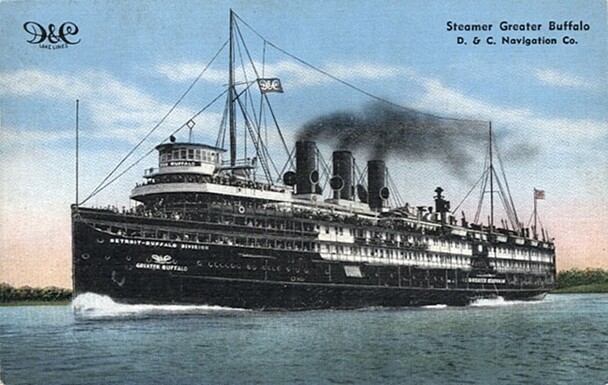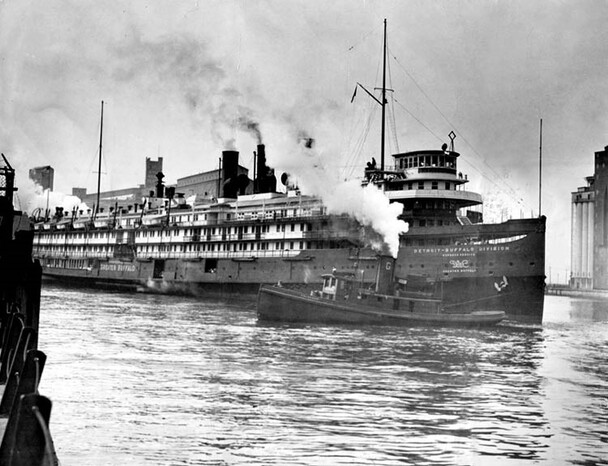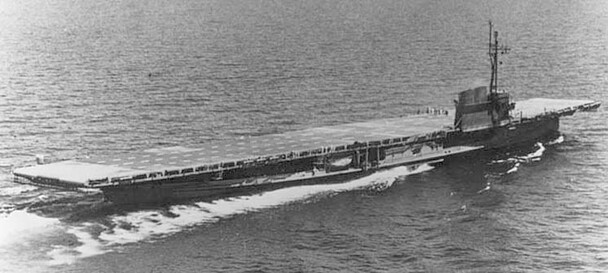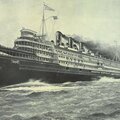In 1924, the Detroit & Cleveland Navigation Company launched the two largest Great Lakes side-wheeled excursion steamers ever, the Greater Buffalo and the Greater Detroit. Designed by renowned marine architect Frank E. Kirby, they were built to provide "night boat" overnight service, transporting up to 1,500 passengers between Buffalo and Detroit.
The Greater Buffalo was 535 feet long and 58 feet wide, details that would help provide her a new life after the Depression had idled luxury lake ships like hers.
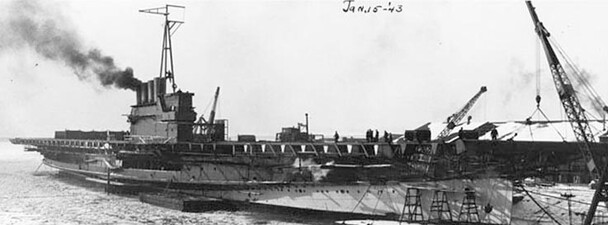
SS Greater Buffalo in January 1943 as she was nearing completion. Image from Naval Historical Center, courtesy of Doug Wilde.
When World War II began, pilots capable of landing on aircraft carriers were desperately needed. The great ship, Seeandbee, also a coal-fired side-wheeler, and the Greater Buffalo were requisitioned to become what was called the "Great Lakes Navy."
As seen above, the Greater Buffalo's cabins and superstructure have been removed down to the main deck and steel supports are being added. The conversion work for the Greater Buffalo was performed at Buffalo's Erie Plant of the American Ship Building Company (formerly Buffalo Dry Dock). The conversion schedule was intense for both ships. The Seeandbee's conversion consumed around $2 million dollars, 1,200 workers on round-the-clock shifts, and three months time.
Sable's deck was originally planned to be made of douglas fir as was the Wolvervine's but the Navy decided to try a steel flight deck. The mottled appearance of the deck in the photo above is due to the testing of different non-skid materials. The Greater Buffalo was re-named U.S.S. Sable and commissioned in May 1943, joining U.S.S. Wolverine (formerly the Seeandbee) on Lake Michigan.
Between the two training ships, over 17,000 carrier pilots were trained, including a handsome young man named George Herbert Walker Bush. Both ships were decommissioned immediately after the war ended in 1945. The Greater Buffalo/Sable was sold for scrap in July 1948 and broken up by the H.H. Bunche Co.
For more information and images on these two unique vessels, see the Summer 2011 issue of Western New York Heritage.
Special thanks to naval researcher Doug Wilde who contacted Heritage Press after the original story and provided accurate identification of the U.S.S. Sable. He said that the island on Sable was slab-faced, a construction simplification over Wolverine's curved ends.
